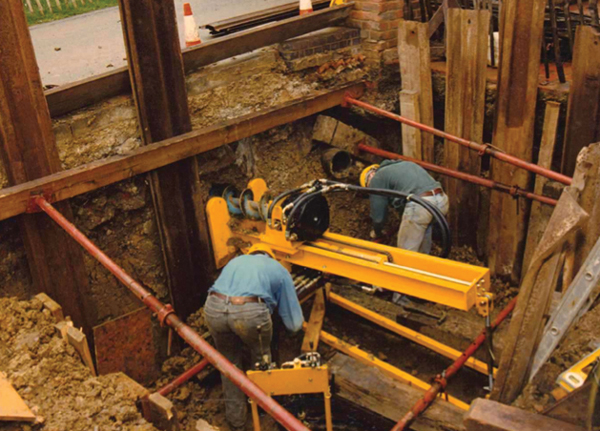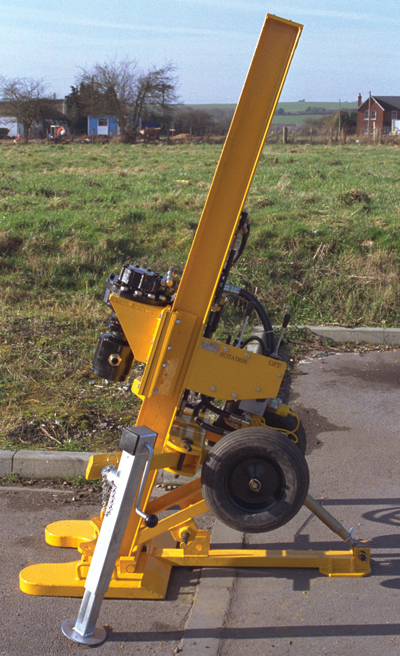Man-Portable Drills

In a DX system, like other geo-exchange systems, the ground is used as a heat source (heating mode) and heat sink (cooling mode). Refrigerant is circulated through buried copper tubing whereas other closed loop systems are designed with high-density plastic pipe (HDPE). Copper is an excellent heat conductor which enables the systems to work efficiently with shorter lengths and smaller diameter loops, typically 3-in. diameter bore holes. Like other closed loop systems, a DX layout can also be vertical or horizontal. However, another standard design utilizes several bore holes drilled diagonally in an umbrella pattern — typically drilled at 15 degree angles, generally to a length of 50 to 120 ft depending on the building’s heating/cooling requirements.
DX systems are appealing to both installers and homeowners because they can be installed in relatively small areas and in relatively shallow soil. What size and type of drilling equipment is necessary? Track-mounted rigs have the advantage of being able to access drill sites that larger rigs cannot. However, the smaller diameter and shorter depth required for DX can be drilled with even more compact and cost-effective equipment.
Many installers are successfully using man-portable drills. Many of these units drill with augers, mud rotary and down-the hole (DTH) hammers allowing a variety of materials and soil conditions to be drilled efficiently. Not surprisingly, they are also used to drill environmental test wells, foundation drilling applications, soil sampling and shallow water wells (according to a USGS study, the average depth of nearly 66 percent of U.S. groundwater is less than 100 ft deep). Of course, for diagonal DX installations the rig must also be able to drill at various angles.
How deep can compact, man-portable rigs drill? That depends on two main factors. First, the drill’s power specs (i.e. torque, rpm, down force, pullback — see “A Drill Rig Specs Guide” online at www.ceunbound.com/index/webapp-stories-action/id.1074). Equipment design and engineering has the greatest bearing on these power specs. For example, pullback and pushdown that is driven by a hydraulic cylinder rather than a motor delivers more force from stationary when it’s required. The rotation head must provide a balance of torque and speed. A beefier mast is needed to handle high amounts of rotary torque, and attention to minor details is what makes a unit truly user-friendly.

Man-portable rigs do have their limitations. Installing casing in collapsing ground conditions can be challenging. Drilling depth capacity can be limited. Difficult ground conditions or a jammed drill bit may require more power. While appropriate for specific applications such as DX and shallow bore drilling, they are not designed to be do-it-all rigs. However, man-portable drills are simple and inexpensive to transport and maintain. Their compact size and maneuverability allows entry to the most restricted access drill sites, and one person can easily operate them. While having their limitations, with pricing below $30,000, man-portable drills provide great options to the drilling and geothermal markets.
Brandon Wronski is an equipment specialist with RigKits LLC, based in Charlotte, N.C.
